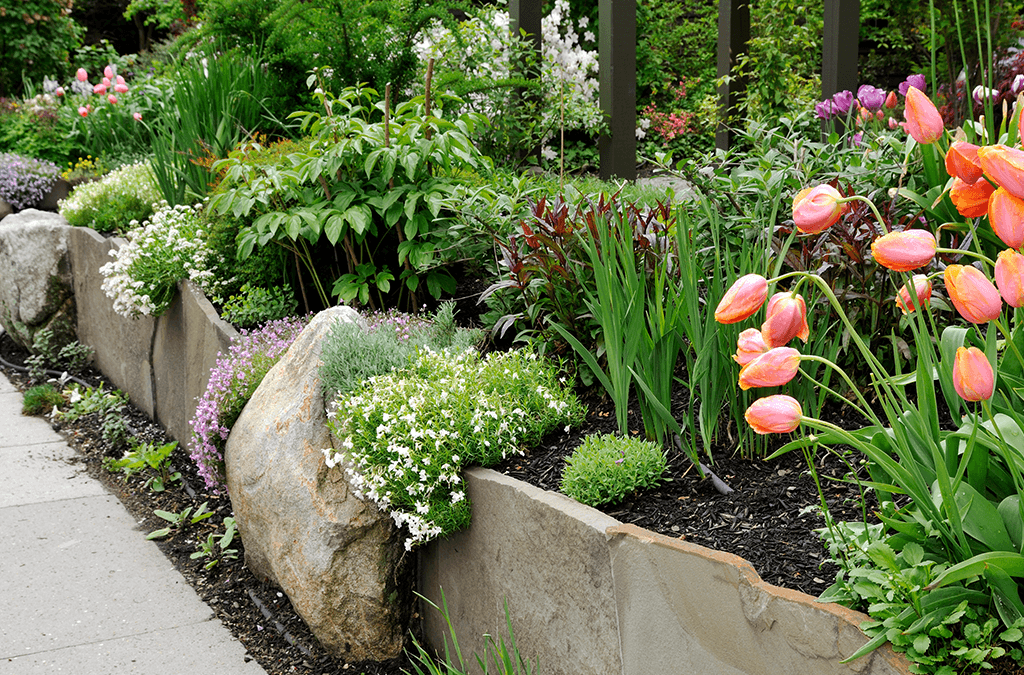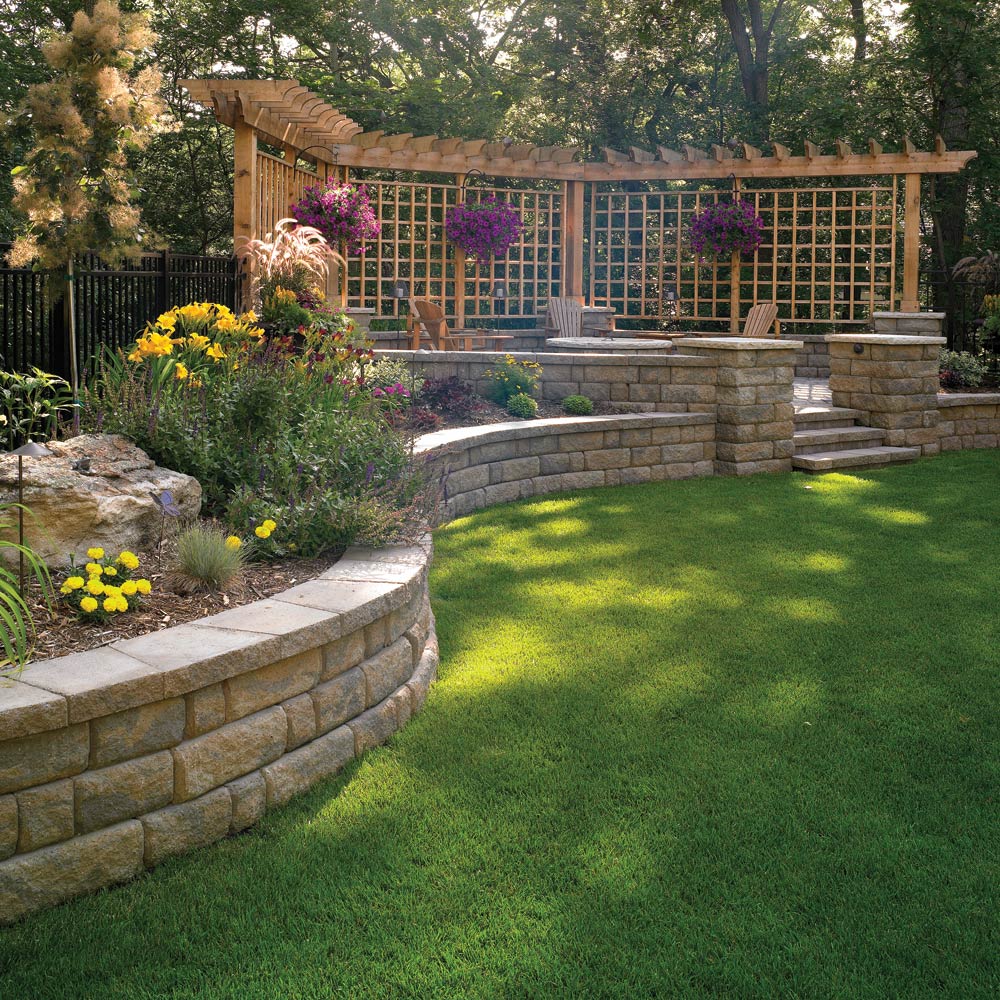The Only Guide for Retaining Wall And Garden Wall Construction
Wiki Article
The Facts About Retaining Wall And Garden Wall Construction Revealed
Table of ContentsIndicators on Retaining Wall And Garden Wall Construction You Should KnowRetaining Wall And Garden Wall Construction Fundamentals ExplainedThe Buzz on Retaining Wall And Garden Wall ConstructionThe Definitive Guide for Retaining Wall And Garden Wall Construction9 Simple Techniques For Retaining Wall And Garden Wall Construction
If this gradient is not controlled, the wall surface will relocate or fall short. Rain that escapes the top of a maintaining wall surface can damage the soil and plants on either side, eroding them away. Water drainage systems divert this water from vulnerable locations, decreasing the effect to the framework and also its environments.
Fill it with crushed rock or crushed rock. All keeping walls should include drain stone even if a draining pipeline is not required. Place filter material over the water drainage stone and also listed below the topsoil. That protects against fine product and also raw material from blocking the drain stone. If your maintaining wall surface requires a water drainage pipe, ensure the pipe has ports on all sides, not just one.
Not known Details About Retaining Wall And Garden Wall Construction
Clay or various other inadequate draining pipes dirts are behind the wall surface. There are hidden water resources within 50 feet of the keeping wall area 5.

Man-made wall surface utilized for supporting soil in between two different elevations Retaining wall surfaces are relatively rigid wall surfaces made use of for sustaining dirt side to side so that it can be kept at various degrees on both sides. Keeping walls are frameworks designed to restrain soil to an incline that it would not naturally keep to (commonly a high, near-vertical or vertical incline).
The smart Trick of Retaining Wall And Garden Wall Construction That Nobody is Discussing
A preserving wall that preserves dirt on the behind and also water on the frontside is called a seawall or a bulkhead. A preserving wall surface is made to keep in area a mass of planet or such, such as the edge of a balcony or excavation. The structure is built to withstand the side stress of soil when there is a desired modification in ground altitude that surpasses the angle of repose of the dirt.These are cantilevered from a ground and increase over the grade on one side to maintain a higher level quality on the opposite side.

This reduction lowers the pressure on the keeping wall. The most important factor to consider in correct layout as well as setup of keeping walls is to recognize and neutralize the propensity of the kept material to relocate downslope as a result of gravity. This creates side planet pressure behind the wall surface which relies on the angle of interior friction (phi) and the natural stamina (c) of the kept product, along with the direction and size of motion the maintaining structure undertakes.
The Only Guide to Retaining Wall And Garden Wall Construction
Water drainage materials will lower or eliminate the hydrostatic pressure as well as boost the stability of the material behind the wall surface. Drystone keeping walls are normally self-draining. As an instance, the International read the article Building Regulations needs preserving wall surfaces to be developed to make sure security against reversing, gliding, too much foundation pressure and also water uplift; which they be developed for a safety and security element of 1. Different kinds of retaining walls Building kinds of gravity preserving wall surfaces Gravity walls depend upon their mass (rock, concrete or various other hefty material) to withstand stress from behind and also might have a 'batter' setback to improve security by leaning back towards the kept dirt. For brief landscape design wall surfaces, they are frequently made from mortarless rock or segmental concrete devices (stonework devices).These walls cantilever loads (like a beam of light) to a big, architectural ground, transforming straight stress from behind the wall to vertical pressures on the ground below. Sometimes cantilevered walls are upheld on the front, or include a counterfort on the back, to boost their toughness standing up to high lots. Buttresses are brief wing walls at best angles to the main trend of the wall surface. Diaphragm wall surfaces are costly walls, yet they save time and also area, and therefore are utilized in city buildings. Sheet pile preserving walls are usually made use of in soft soil and also tight rooms.

The 5-Minute Rule for Retaining Wall And Garden Wall Construction
An anchored retaining wall surface can be built in any of the previously mentioned styles however likewise consists of additional strength utilizing cable televisions or other remains anchored in the rock or soil behind it. Typically driven right into click for source the product with boring, anchors are then increased at the end of the cord, either by mechanical methods or often by infusing pressurized concrete, which broadens to create a light bulb in the soil.Report this wiki page